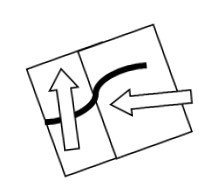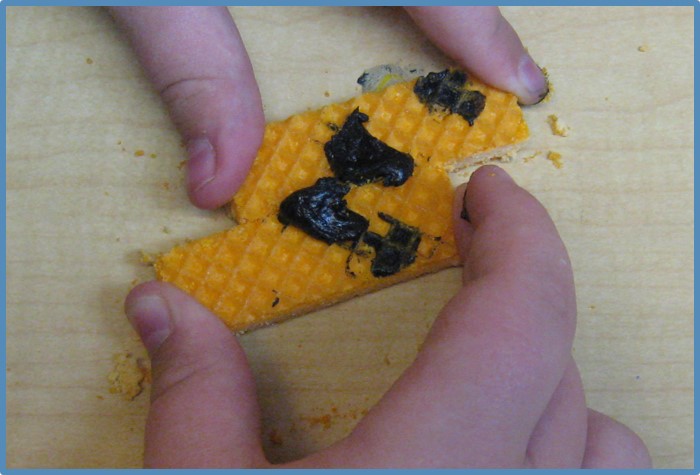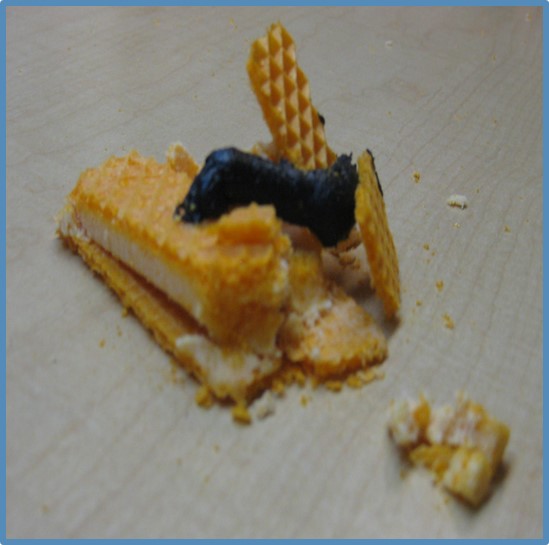Sign up for Lesson Plans, discounts & more!
Plate Tectonics -Transform Boundaries
Lesson Plan
Plate Tectonics
Lesson/Demonstration #5a: Transform Boundaries
Guiding question: Why are there so many earthquakes in California and along the western coast of the United States?
Direct aims:
§ To understand what happens to the land at transform boundaries
§ To understand how plates move side by side as well as away from and toward one another
Indirect Aims:
§ Preparation for understanding different types of transform faults
§ Understand earthquakes, causes and effects
Materials:
- Cut-out Arrows; from Montessori Geometry Box of Sticks (see “Materials” section in the complete e-book)
- Geographic Map that shows plate boundaries
Procedure:
- Review Convergent and Divergent (from previous lessons in the complete e-book)
- Lay out two arrows in the following manner:

- Discuss how the lines are parallel, but they indicate movement in opposite directions.
- Using the plate map, look at the Scotia Plate. It lies between the South American Plate and the Antarctic plate.
- The north and south edges of the Scotia plate represent transform boundaries, places where the plates are moving in opposite directions alongside each other. It is as if the Scotia plate is stuck between the two major plates and can simply sit still and grind against the other two plates as they move.
- Have students put one hand on top of the other and move them in opposite directions. They can feel the heat caused by friction when they move their hands back and forth.
- In transform boundaries, the plates grind against each other. Earthquakes are common at transform boundaries.
- A transform boundary creates a transform fault.
- Show the students the location of the San Andreas Fault in California. This is a transform Boundary / Fault between the North American Plate and the Pacific Plate.
- Students may lay arrows on a globe or map to demonstrate the direction the plates are moving.

Observation: Have students give verbal and written impressions and observations at this point in the lesson to demonstrate how they are thinking about transform boundaries.
Explanation for the teacher/science behind the work: The transform boundaries occur between plates that are sliding by each other in opposite directions. Transform Faults occur at these locations and there are frequent earthquakes.
Statement: Transform Boundaries are boundaries between plates that are slipping side by side. (NOTE: This statement can be used as a handwriting activity in student notebook.)
Plate Tectonics: Demonstration
Lesson/Demonstration #5b: Transform Boundaries demonstration
Direct aims:
§ To understand what happens to the land at transform boundaries
§ To understand how plates move side by side as well as away from and toward one another
Indirect Aims:
§ Preparation for understanding different types of transform faults
Materials:
- Two layered-wafer cookies for each pair of students
- Piece of paper, large than the wafers, labeled N,S,E,W for the cardinal directions
- Tube of frosting
4. Geographic Map that shows plate boundaries
Procedure:
- Review Lesson 5 in which you defined transform boundaries
- Lay the cookies side-by-side on the paper in a northwesterly direction. (Cookies represent the Pacific Plate and the North American Plate)
- Spread a line of frosting across the two cookies. (To represent a road)


- Move the cookie on the left in a northwesterly direction, while moving the cookie on the right in a westerly direction.

Observe: Do the plates move or stick? Is there sideways motion? What happens along the edges of the plates? What happens to the road?
- Show the students the location of the San Andreas Fault in California. This is a transform Boundary / Fault between the North American Plate and the Pacific Plate.
- Students may lay arrows on a globe to demonstrate the direction the plates are moving.
Explanation for the teacher/science behind the work: The transform boundaries occur between plates that are sliding by each other in opposite directions. Transform Faults occur at these locations and there are frequent earthquakes.
Statement: Transform Boundaries are boundaries between plates that are slipping side by side.

INTERESTED IN MORE? IF SO, YOU MAY WANT TO CHECK OUT OUR OTHER SITES:
fossilicious.com - Our online fossil and mineral rock shop.
fossils-facts-and-finds.com - An educational site about fossils.











